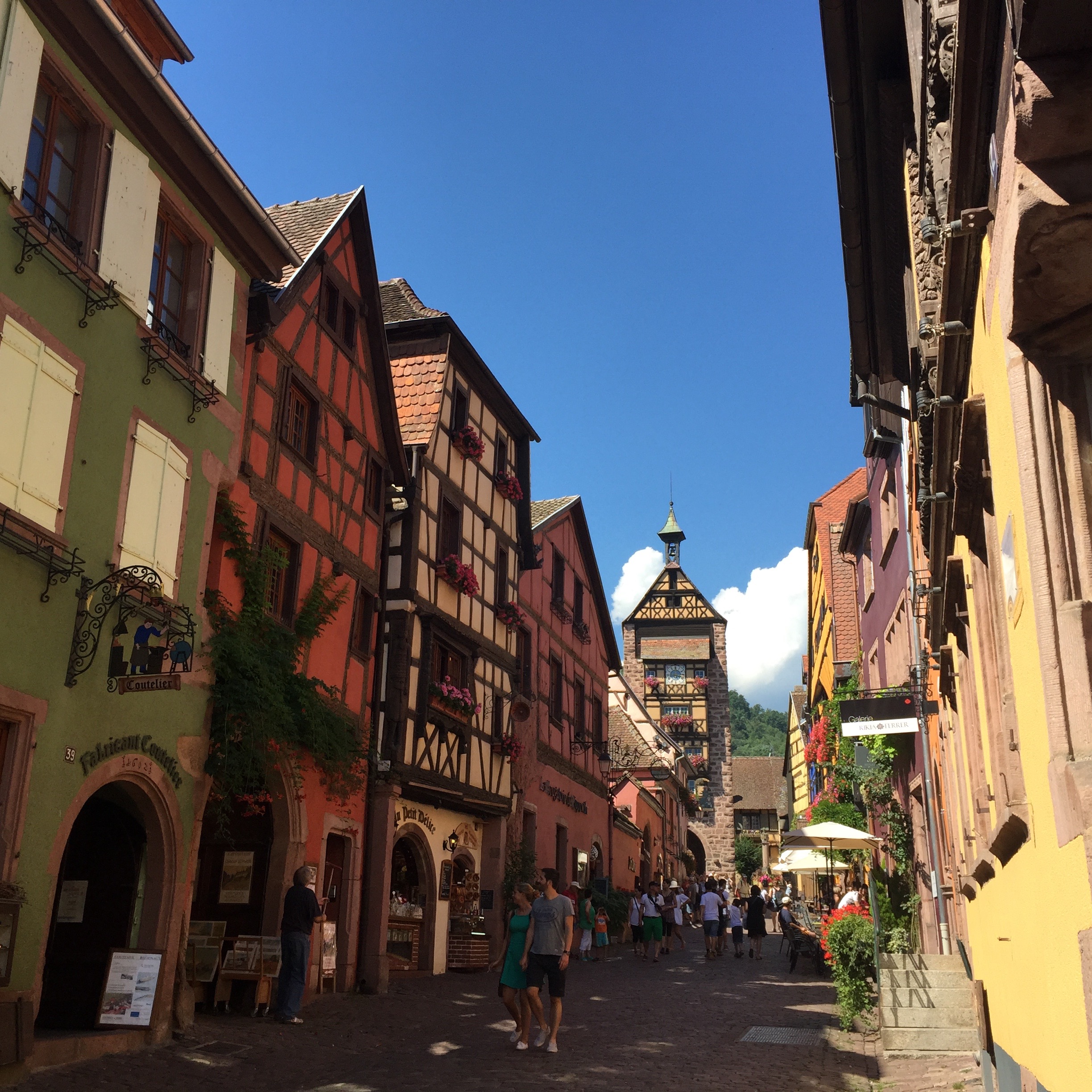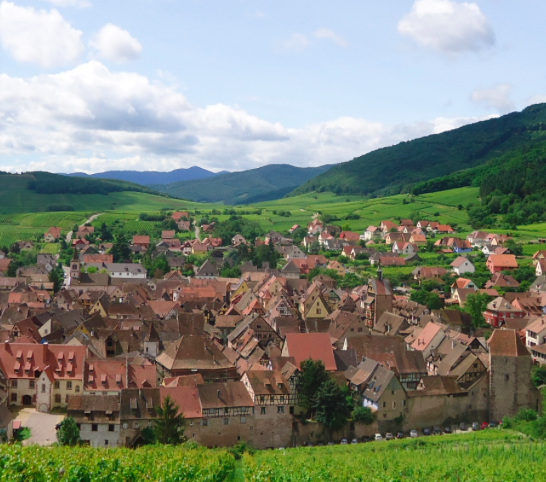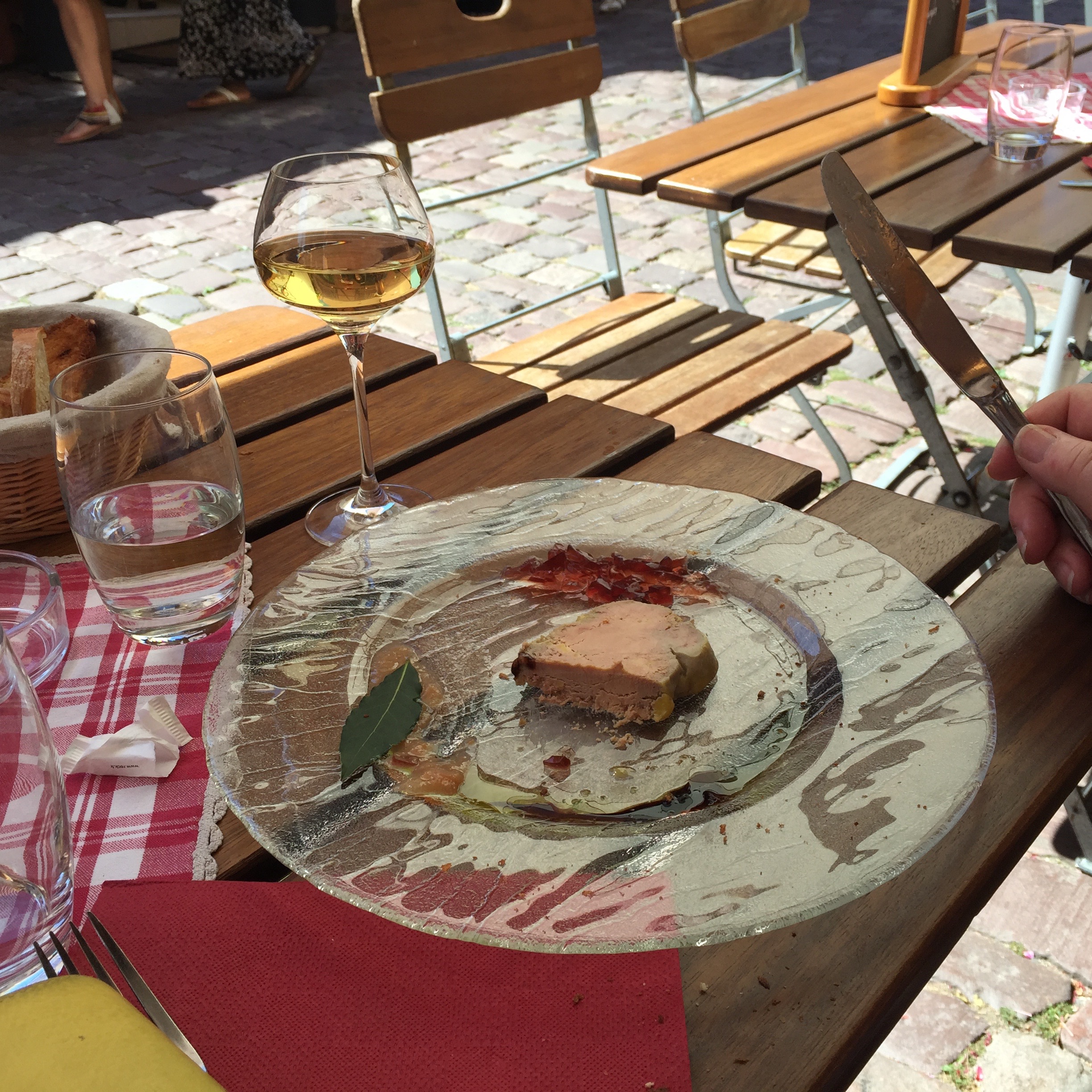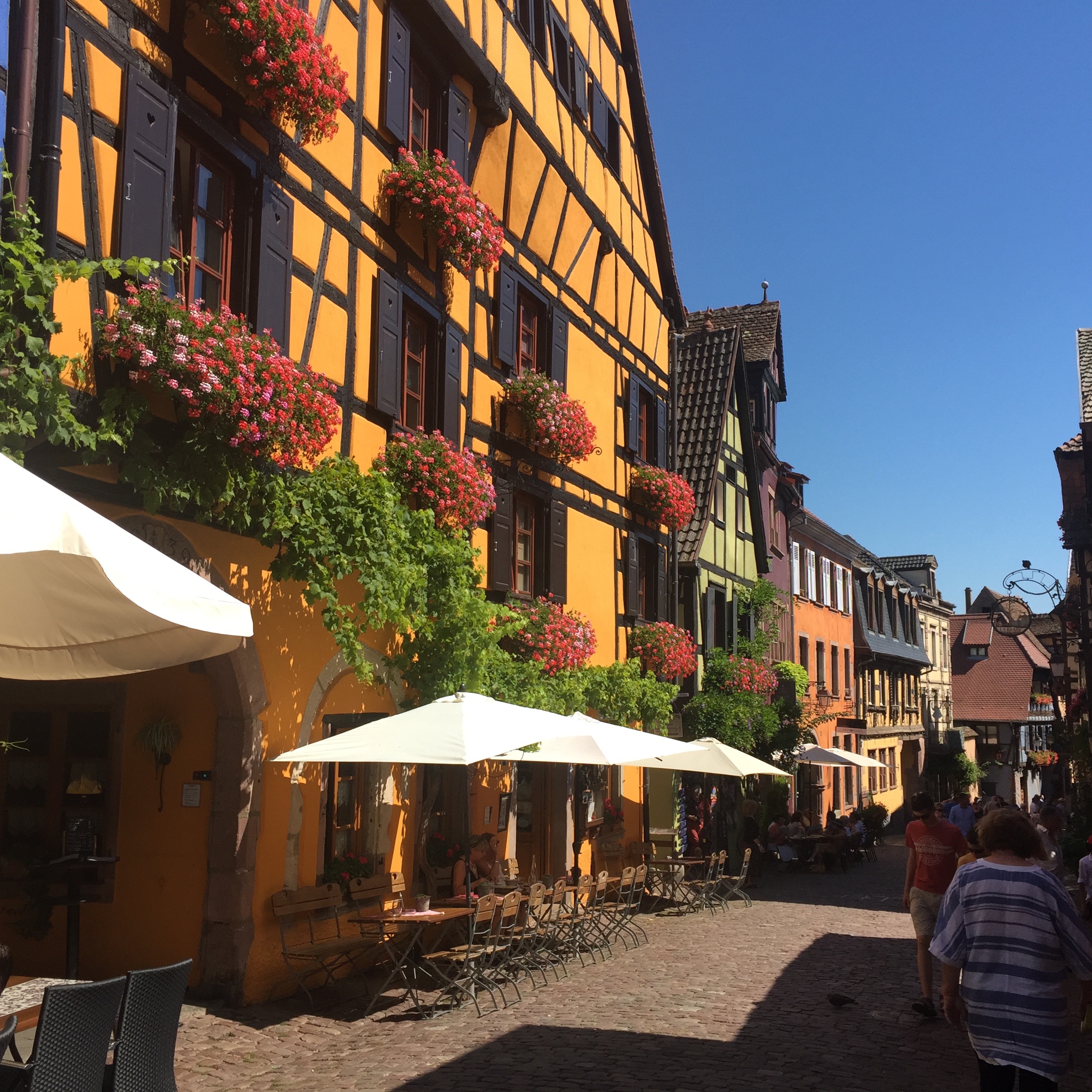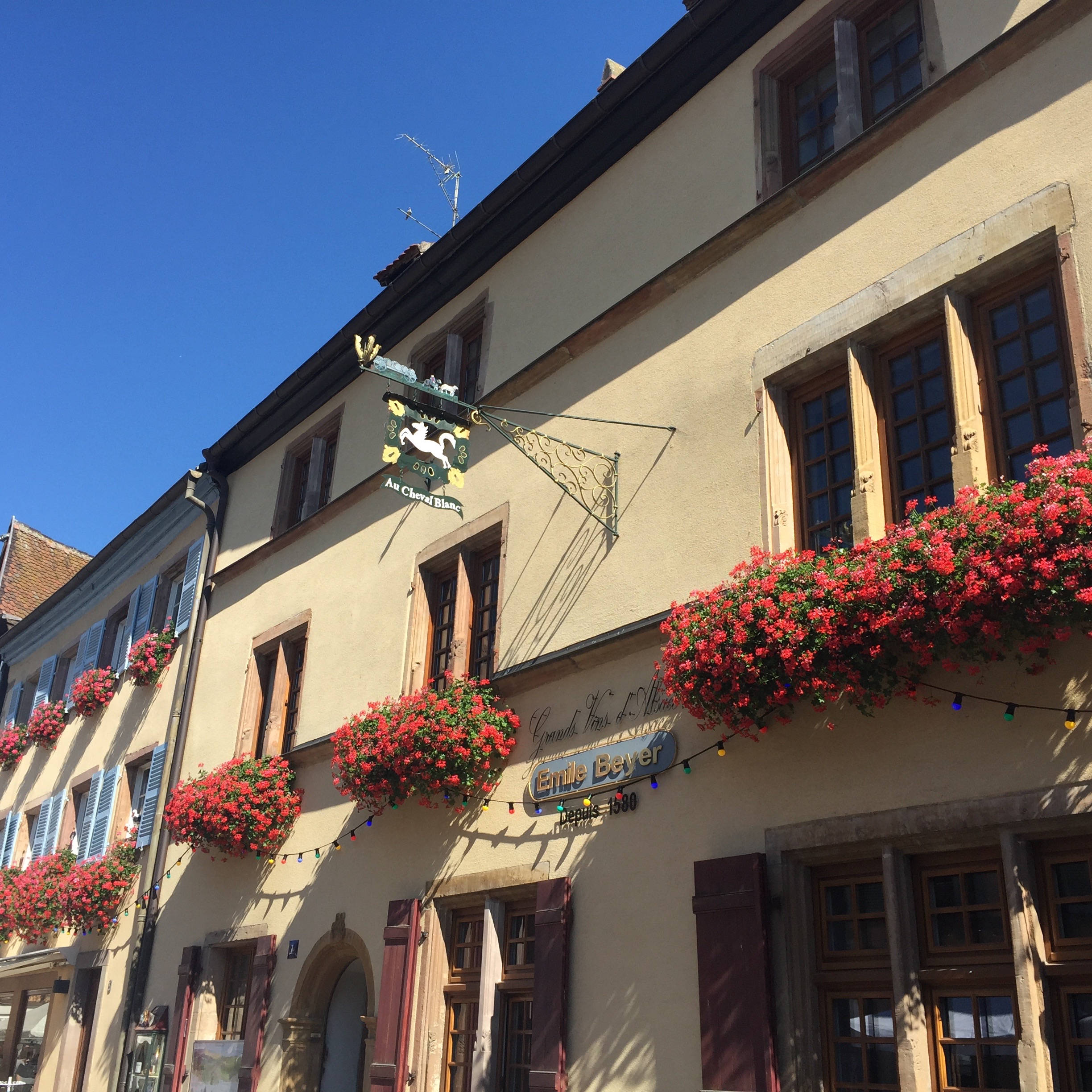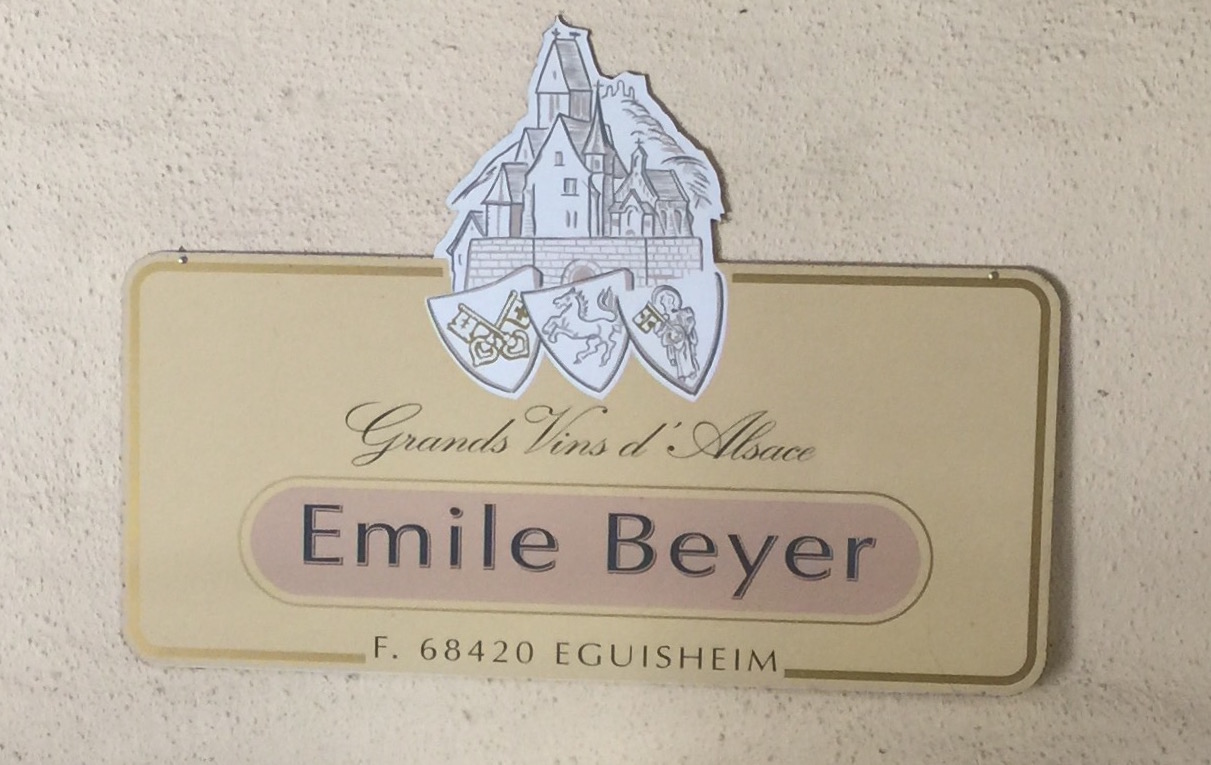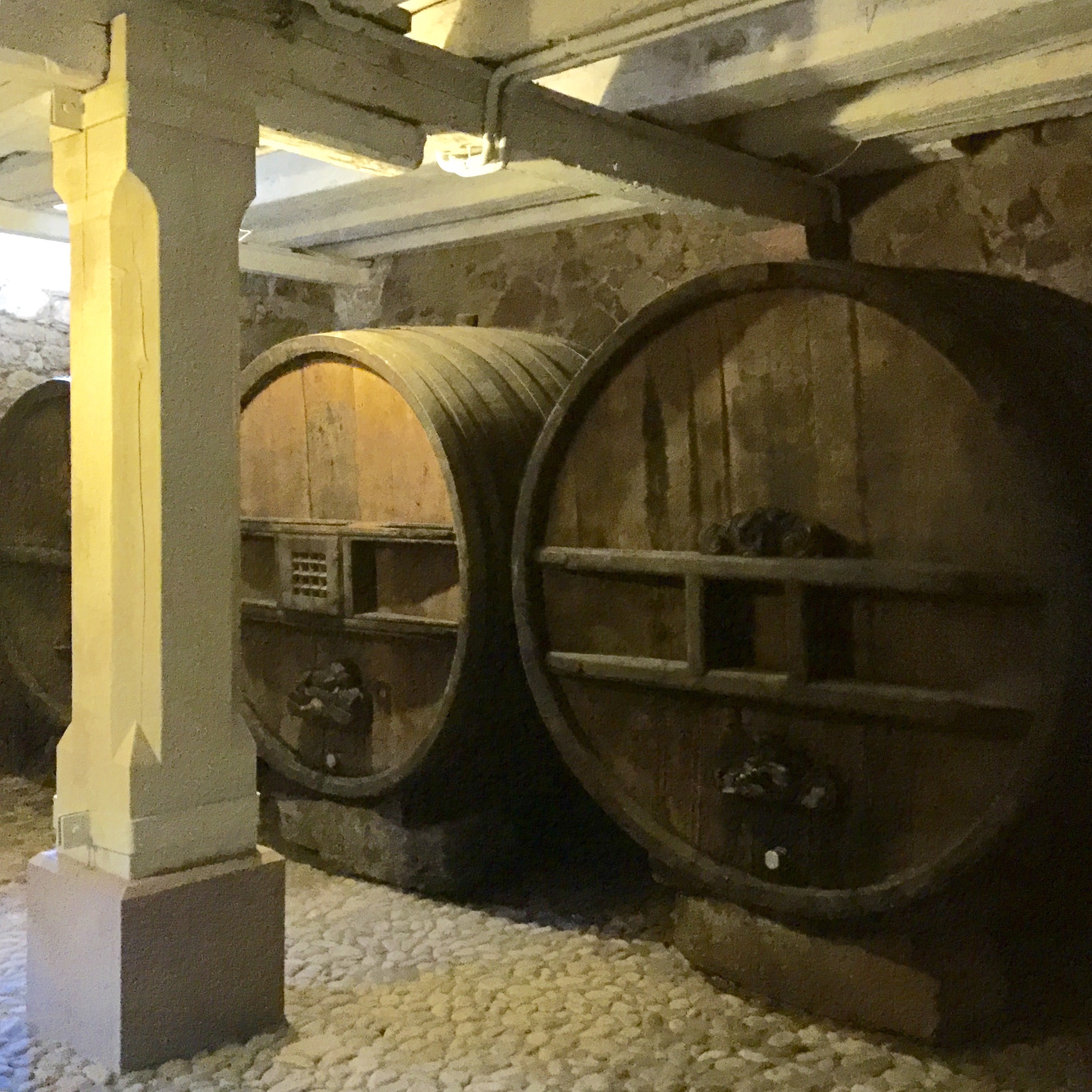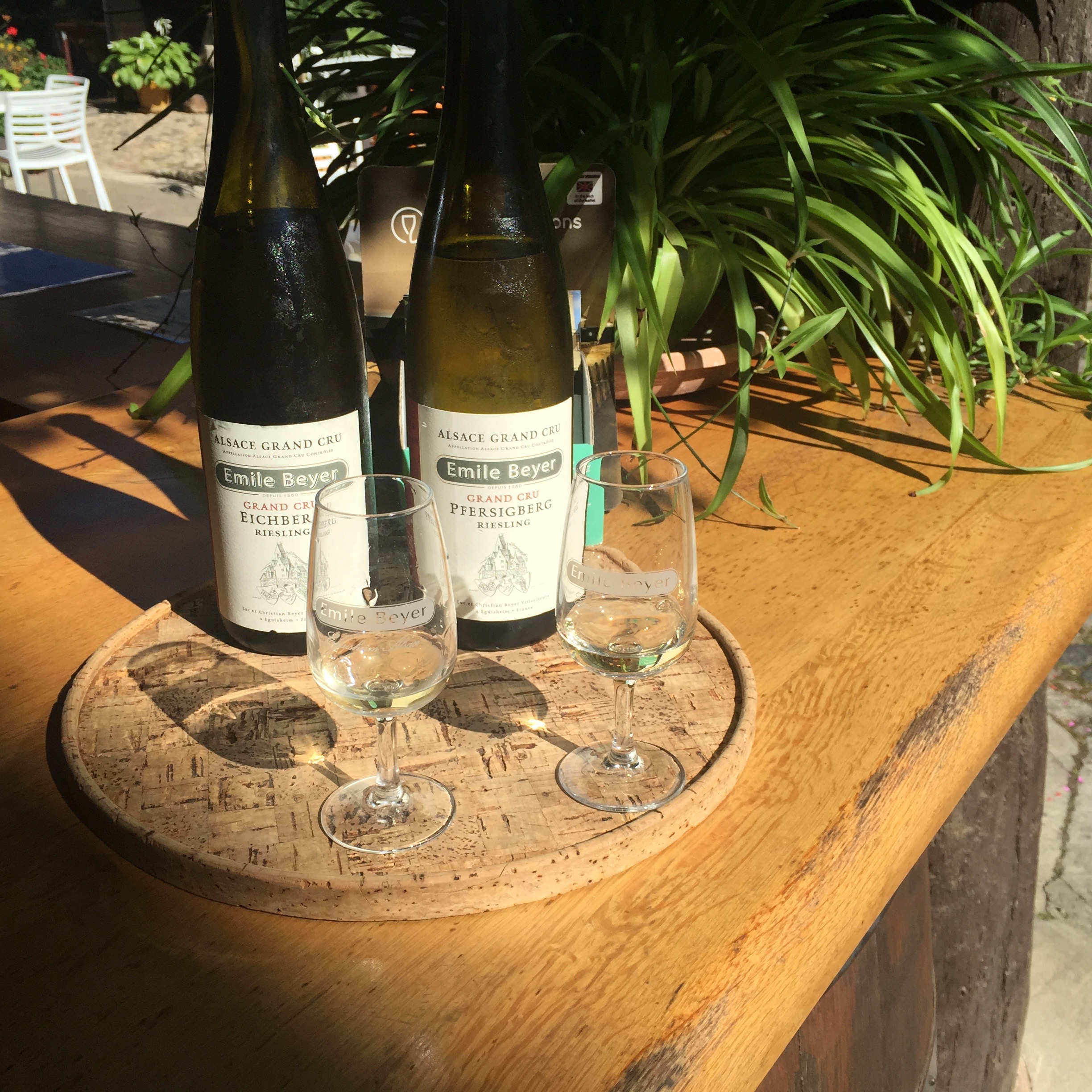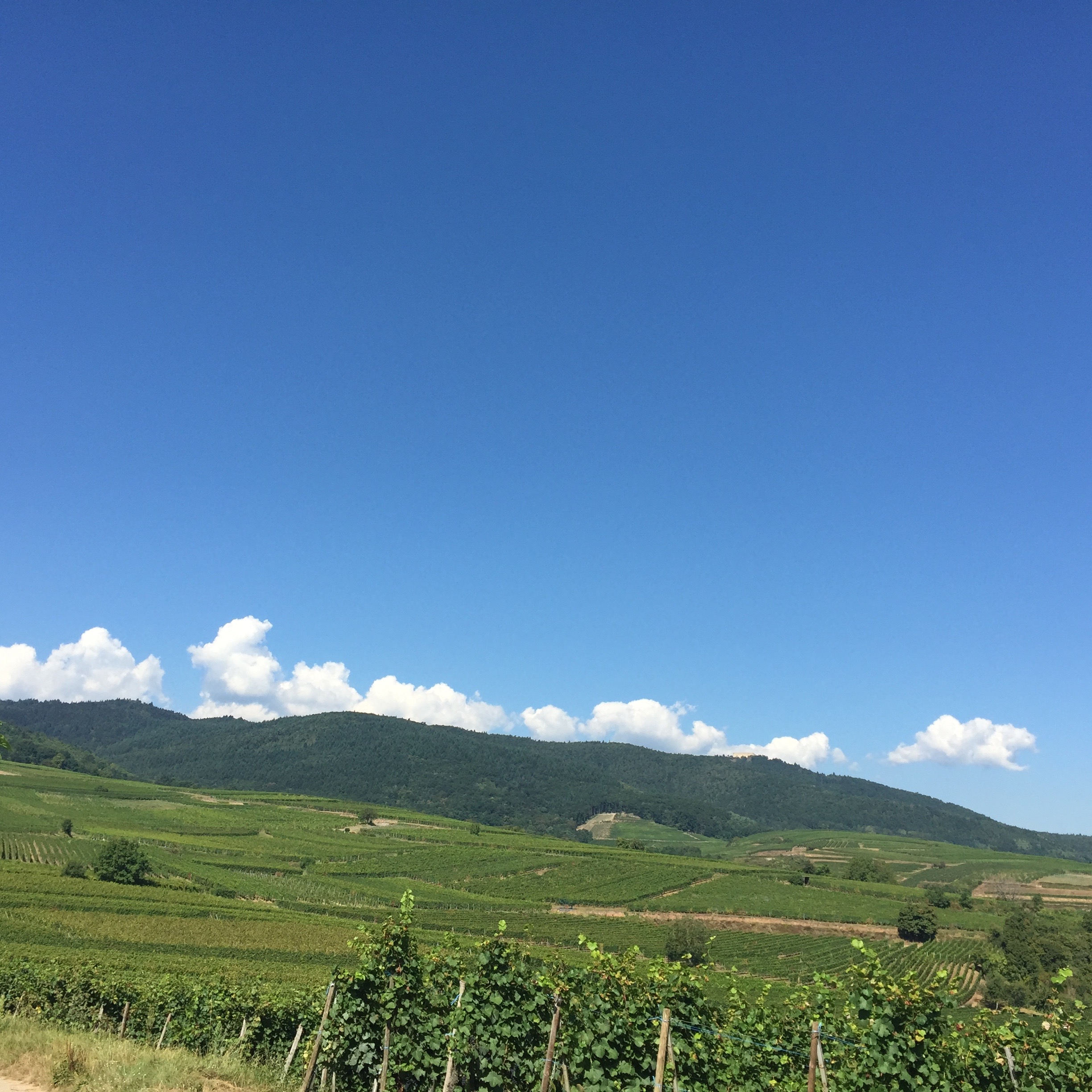View up Riquewihr’s central street, Rue de General de Gaulle (Photo P. Hunt 2016)
By Patrick Hunt –
Those who love the best of Alsace know that although it is now part of France, it has been fought over though history, involuntarily changing nationalities four times in hundreds of years in a tug of war between France and Germany. Some of this change of flag has been written about in many accounts, one of my favorites regarding the last altercation being Don and Petie Kladstrup’s wonderful book Wine and War: France, the Nazis and the Battle For France’s Greatest Treasure (Broadway Books, 2002), which I have used as a text in my classes at Stanford.
Alsace’s Riquewihr from the north below the Vosges Mountains (Photo courtesy Brasserie Riquewihr 2016)
Because of this hybrid duality the identity of Alsace is perhaps the best possible blend of both French and German character, and this is reflected in its architecture, its food, and its wine as well as its language and toponyms or place names. It is not unusual to find both French and German names in the same person with a French first name and a German surname or vice versa. The Nazis, for example, forbade first names that were French during World War II.
The wonderful medieval character of Alsatian villages, with preserved wainscoting of half-timbered buildings dating back to the 15th and 16th centuries is often lovingly enhanced by hanging window boxes of geraniums and other flowers. Meticulous German attention to detail and finesse for perfection blends with French taste and gourmandaise; long French traditions for viticulture and terroir are at home with medieval German architecture.
But this dual character is also reflected in the unique haute cuisine of Alsace. Where else can one find a luscious foie gras that melts in the mouth paired with a nectar-like viscous late harvest Gewurtztraminer, as I enjoyed for lunch in this latest visit at Jackie Merius’ Au Dolder Brasserie?
Foie Gras and Vendage Tardive Gewurtztraminer, Riquewihr (Photo P. Hunt, 2016)
At the base of the Vosges Mountains, Eguisheim, a Village Fleurie with the top possible category of four stars where we stayed last week, was also named one of France’s Most Beautiful Village (Plus Beaux Villages de France) in 2013 as well as Le Village Prefere des Francais that same year. Riquewihr, up the road past Colmar and slightly higher in the Vosges foothills, is also equally beautiful and also a Village Fleurie with equal status. Of course, there are many others in Alsace and all of France that are no doubt as lovely, but these two also have added attractions as wine villages of great distinction. Other notable historic moments for Eguisheim are that it supported an important Paleolithic community, was later an oppidum of the Senones tribe of Gauls, became Romanized and its viticulture was begun by Roman legions, and finally it was walled as the medieval seat of the Dukes of Alsace in the 11th century (traces of this walled enclosure are still retained in the shape of the elliptical old village) and was reputedly the birthplace of Pope Leo IX around the year 1000.
Riquewihr is equally historic and also voted one of the Les Plus Beaux Villages de France. Its medieval fortifications remain as well and one can enter the town from the east through the barbican of its medieval walls, now the Hotel de Ville. Riquewihr was the fiefdom of the Dukes of Württemburg (part of the Holy Roman Empire between around 1500 until the 19th c.) and it became Protestant during the Reformation, unlike many of its Rhine neighbors. Its town tower is one of the most distinctive in Alsace.
Riquewihr, Jacky Merius’ Au Dolder Brasserie Restaurant (Photo P. Hunt, 2016)
Last year I was also in Riquewihr to meet Etienne Hugel of the grand family Hugel of legendary Alsace wine, and revisiting again this year in both Riquewihr and Eguisheim – the day of the annual Fete des Vignerons – I was also able to taste one of the most sought-after wines in Alsace: Emile Beyer’s Eichberg Grand Cru. Maison Beyer has been producing wine in Alsace and Eguisheim since 1580. The wine press dates to the 18th century and their wine tuns in the cave are even older. While it was a busy day for the festival with bustling village preparations, I was not disappointed by a degustation of the Emile Beyer Eichberg Grand Cru, along with his Pfersigberg Grand Cru as well as the popular Emile Beyer Traditional Pino Gris. Michelin star sommeliers in France know well Emile Beyer’s wines, and while my several tastings of Vendage Tardive (Late Harvest) Gewurtztraminer, nothing excelled the Grand Cru Riesling of Emlie Beyer.
Domaine Emile Beyer in Eguisheim since 1580, exterior and cave with ancient tuns (Photo P. Hunt, 2016)
After my degustation at Emile Beyer, I went up above the town to the hilly vineyards along the route of the Trois Chateaux at the base of the Vosges, with perfect south-facing slopes. Even if one is able to only spend a few days in Alsace at a time, these two villages should be on anyone’s itinerary even if tourism has bright them greater visibility because the food and wine alone will be a feast for the body; while the beautiful preserved architecture and medieval structures will also be feasts for the eyes and soul.
Eguisheim Vineyards, including Emile Beyer’s under the Vosges Mountains by the Trois Chateaux
